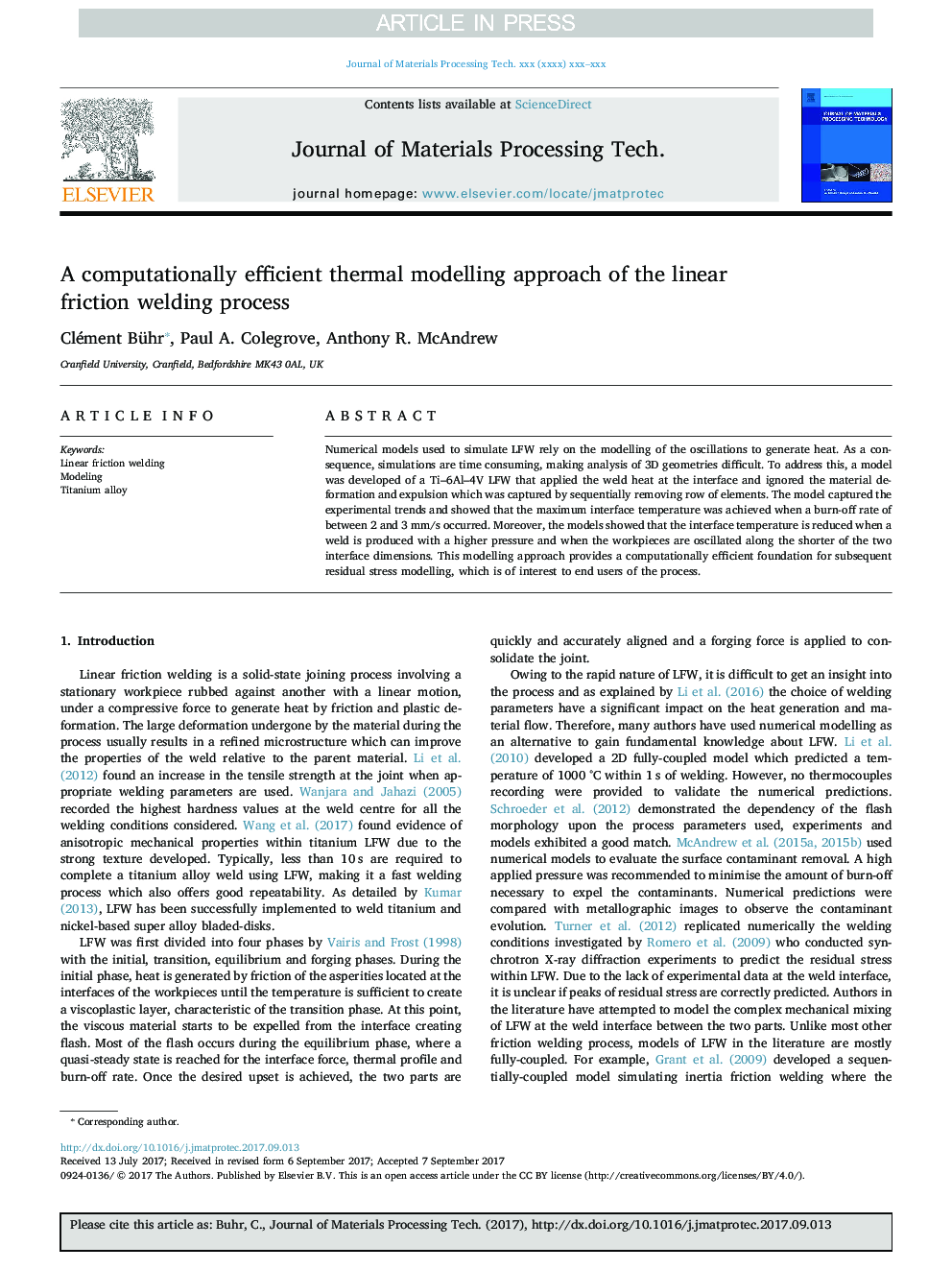| کد مقاله | کد نشریه | سال انتشار | مقاله انگلیسی | نسخه تمام متن |
|---|---|---|---|---|
| 7176598 | 1466715 | 2018 | 10 صفحه PDF | دانلود رایگان |
عنوان انگلیسی مقاله ISI
A computationally efficient thermal modelling approach of the linear friction welding process
ترجمه فارسی عنوان
یک رویکرد مدل سازی حرارتی کارآمد از روند جوش خطی اصطکاک
دانلود مقاله + سفارش ترجمه
دانلود مقاله ISI انگلیسی
رایگان برای ایرانیان
کلمات کلیدی
جوش خطی خطی، مدل سازی، آلیاژ تیتانیوم،
موضوعات مرتبط
مهندسی و علوم پایه
سایر رشته های مهندسی
مهندسی صنعتی و تولید
چکیده انگلیسی
Numerical models used to simulate LFW rely on the modelling of the oscillations to generate heat. As a consequence, simulations are time consuming, making analysis of 3D geometries difficult. To address this, a model was developed of a Ti-6Al-4V LFW that applied the weld heat at the interface and ignored the material deformation and expulsion which was captured by sequentially removing row of elements. The model captured the experimental trends and showed that the maximum interface temperature was achieved when a burn-off rate of between 2 and 3Â mm/s occurred. Moreover, the models showed that the interface temperature is reduced when a weld is produced with a higher pressure and when the workpieces are oscillated along the shorter of the two interface dimensions. This modelling approach provides a computationally efficient foundation for subsequent residual stress modelling, which is of interest to end users of the process.
ناشر
Database: Elsevier - ScienceDirect (ساینس دایرکت)
Journal: Journal of Materials Processing Technology - Volume 252, February 2018, Pages 849-858
Journal: Journal of Materials Processing Technology - Volume 252, February 2018, Pages 849-858
نویسندگان
Clément Bühr, Paul A. Colegrove, Anthony R. McAndrew,
